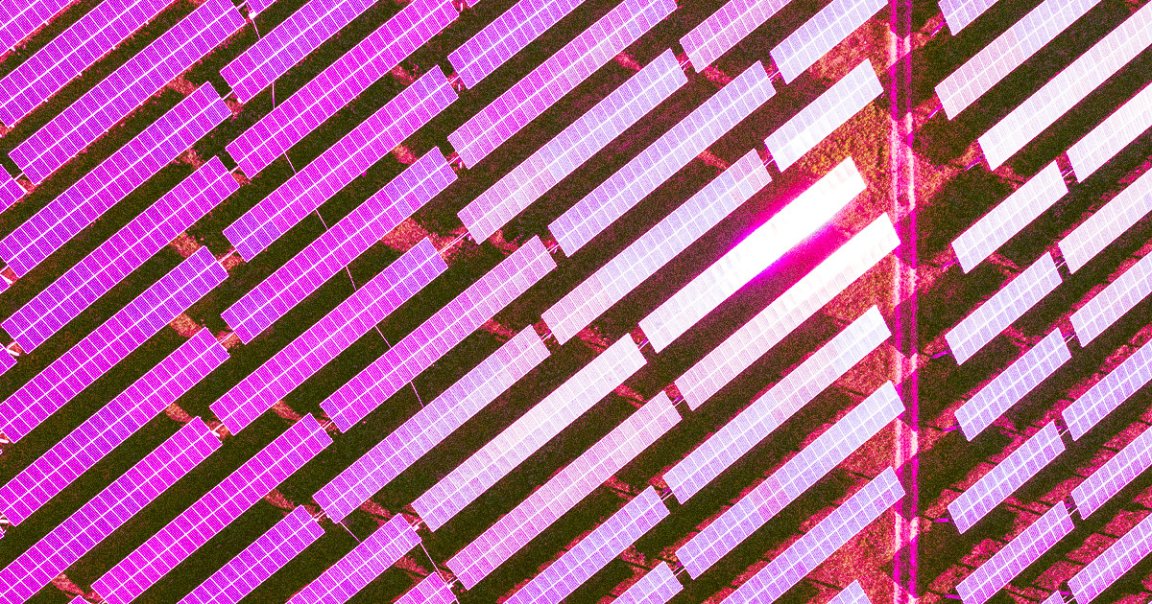
Sun Police
California, which gets over a quarter of its electricity from solar, is generating more power than it knows what to do with. On sunny days, there’s now so much solar energy being supplied that electricity prices can dip into the negative, The Washington Post reports — a preview of the economic and infrastructural problems that renewables will have to navigate.
“These are not insurmountable challenges,” Michelle Davis at consulting firm Wood Mackenzie Power and Renewables, told the WaPo. “But they are challenges that a lot of grid operators have never had to deal with.”
Ray Lotta
Solar power, unlike energy from fossil fuels, isn’t “dispatchable,” meaning that electricity grid operators can’t control — or even necessarily predict — how much energy it supplies.
This comes into play in what’s called “net load”: the total demand for electricity minus the energy supplied by solar and other renewables. What’s left over in that equation is the amount of power from conventional sources that CAISO, California’s grid operator, will have to put into the electric system.
In the morning when everyone’s getting up, demand is high. But by midday, the sun’s out and solar energy can provide almost all the power needed, causing prices to plummet.
On a graph of daily net load, this pronounced pattern is called a “duck curve,” for its resemblance to the bird. It’s at its most dramatic in the spring, when the skies are sunny but temperatures are relatively mild, meaning that there’s less demand for heating and cooling.
“We drastically underestimated the speed at which residential solar was going to come in,” Clyde Loutan, principal for renewable energy integration at CAISO, told the WaPo.
Fine Shine
In the grand scheme of things, it’s a good problem to have. Solar energy is obviously no slouch.
But it also means that a lot of that energy isn’t being used. According to the WaPo, 95 percent of California’s 2.4 million megawatt-hours of wasted electricity in 2022 was solar. The chief consequence of that waste, the WaPo argues, is economic. In the long run, it could cause electricity prices to go up.
California has responded to this predicament in a way that has angered proponents of renewables. Last year, the state government started paying solar owners less money for the energy they put into the grid, a practice known as “net-metering.” In effect, this makes solar less affordable, curtailing its adoption.
Discouraging as that may be, there are other promising solutions to explore. Right now, according to the WaPo, CAISO is selling some of that extra power to nearby states.
The real game changer would be if, in the future, the widespread use of batteries and other forms of storage could save any excess solar power generated during the day — meaning the power from sunny days will be able to last well into the nighttime, instead of forcing fossil fuel power plants to spin back up.
More on solar: Researchers Say Solar Is Getting So Good That People Could Start Quitting the Electric Grid